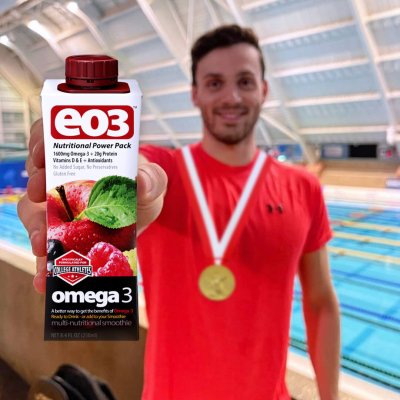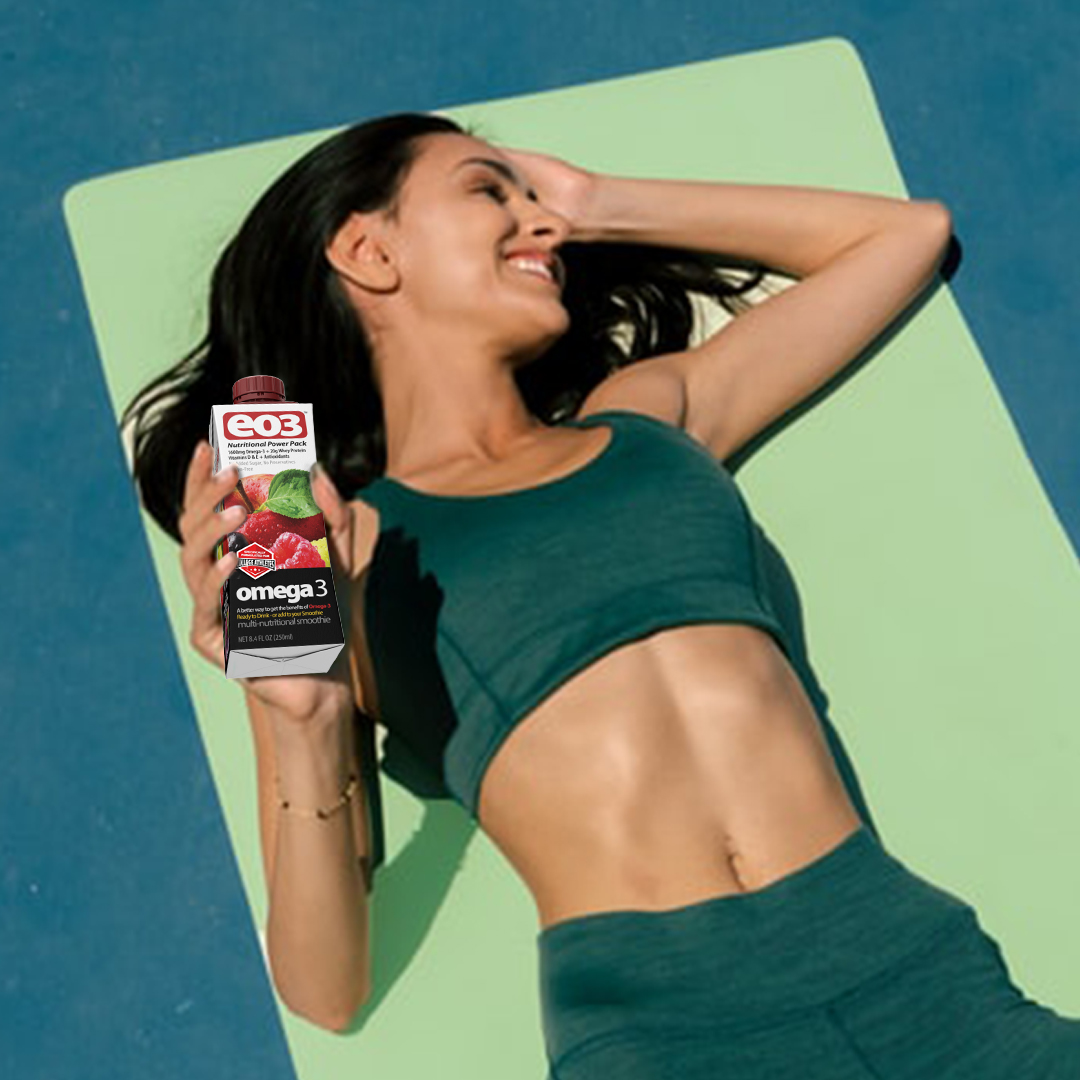Not all dietary supplements are created equally. It’s important to look at the form of the supplement, active ingredients, amounts of each active ingredient per serving (because some supplements will shortchange you), the recommended number of servings per day and supplement quality. Quality assurance testing can help verify that the supplement actually contains the amount of each ingredient as listed on the Supplement Facts or Nutrition Facts Panel without exceeding industry standards for oxidized lipids and heavy metals.
When it comes to omega-3 supplements, there are four main things to consider:
- Supplement form and serving size
- Does your supplement meet label claims?
- Does the supplement meet industry standards for heavy metals and oxidation?
- Does the company do any quality assurance testing?
Supplement Form and Serving Sizes
Omega-3’s come in four main forms: softgels, gummies, chews and liquid. Softgels are the most common form of omega-3s although some people avoid them because they don’t want to swallow large softgels which, despite the name, are often hard.
Softgels contain approximately 140 – 2160 mg of EPA and 90 – 2025 mg of DHA per serving per day. However, each serving may include 2 to 5 softgels and some of these supplements require you to take 2 to 4 servings per day to get a decent amount of omega-3s![i] If you don’t love taking supplements or if you tend to stop taking them, it’s not a good idea to choose a supplement that contains several capsules per serving.
Gummies are all the rage right now. They are easy to eat and typically taste good. But there are some things to consider before you dive into gummy supplements. First off, gummies typically contain the lowest amount of EPA and DHA per serving of any form of omega-3 supplements. In fact, many gummies contain a tiny fraction of the recommended 500 mg of EPA + DHA per day. Some contain less than 1/10 of this amount! And therefore, you may need several servings of these to get an efficacious dose of omega-3s. Additionally, gummies typically contain sugar and other ingredients you may not want. If you need multiple gummies just to get an efficacious dose of a supplement, the sugar and extra calories can add up.
Chews are relative newcomers to the omega-3 supplement market. They contain more EPA plus DHA per serving than gummies. Liquids also enable you to get a higher dose of omega-3s per serving.
Does Your Supplement Actually Contain What It Says It Contains?
Wise consumers compare omega-3 supplements based on the amount of EPA and DHA in a serving and the number of softgels, gummies, teaspoons etc. in one single serving. But even this is not an exact math because you might not be getting exactly what is listed on the Nutrition Facts or Supplement Facts Panel.
Nutrition Facts Panel
Any omega-3 product that has a Nutrition Facts Panel must contain at least 80% of the omega-3’s listed on the label.[ii] And therefore, the product you are getting might actually contain 20% less omega-3 then listed on the label (or more if it doesn’t meet this standard).
Supplement Facts Panel
If the omega-3 is considered a dietary supplement (most are) it will have a Supplement Facts Panel. Ingredients added to a supplement must contain 100% of what is declared on the label. Products that contain less than this amount of a dietary ingredient are considered misbranded and in violation of the law. However, it is up to the supplement manufacturer to ensure their supplement contains 100% of the EPA and DHA they list on the label. In other words, you need to trust the company that is making the products you buy.
There is one exception to this. If the dietary ingredient is naturally occurring, it must be present at 80% of the value declared on the label.[iii] This does not apply to omega-3 supplements.
Some Supplements Fall Below Amounts Listed On The Label
When it comes to omega-3 supplements, you don’t want to get shortchanged on the amount of EPA and DHA in your supplement. Yet some omega-3 supplements are not meeting label claims. In one study, over 70% of the supplements tested did not contain the amount of EPA and DHA stated on the label. Some of the supplements tested contained only 66% and 62% of the amount of amount of EPA or DHA listed on the label.[iv]
Another examining 15 top-selling fish oil supplements in North America found over half of the omega-3 supplements tested did not meet their label claims for EPA and DHA.[v] However, separate analyses by Consumer Lab found far fewer label issues. In one analysis, they found 3 out of 28 had label or quality issues.[vi] A 2012 analysis by Consumer Lab found most of the 68 omega-3 supplements tested pasted although four supplements contained 20 – 30% less than the amounts of EPA, DHA or other fatty acids listed on the label. Additionally, three products contained two to three times the amount of EPA or other fatty acids listed on the label.
In addition to getting a product that is tested to ensure it meets the amount of each fatty acid listed on the label, you want a product that doesn’t contain any fatty acids not listed on the label. A study examining 3 of the top selling fish oils in the United States found all 3 contained a number of different fatty acids not listed on the label. One of the products contained 36% of its total fat from saturated fatty acids.[vii]
Heavy Metals and Oxidized Lipids
When producing omega-3 supplements it is important to take the proper steps to purify and remove any free fatty acids, heavy metals and other contaminants while also minimizing the potential for exceeding industry standards for oxidation.
Heavy metals occur naturally in the environment and may be present at higher levels in some fish. However, good manufacturing processes can help limit heavy metals in fish oil-based omega-3 supplements to within recommended limits.[viii] Though little research has examined heavy metals in fish oils, a 2012 analysis by Consumer Lab found most of the 68 omega-3 supplements tested pasted although 2 exceeded limits for lead. While this sounds alarming, raw or cooked fish may contain more lead than fish oil supplements. EO3 goes the extra mile to ensure heavy metals are far lower than industry standards. They do this by closely monitoring every production step and gently refining the fish oil to remove heavy metals and toxins.
Oxidation is the breakdown of the chemical bonds in fatty acids upon exposure to oxygen. All unsaturated fatty acids, whether they are from a fish oil supplement or your cooking oil, will oxidize over time. The rate of oxidation is complex and influenced by several factors including: exposure to oxygen, light, and heat as well as fatty acid composition of the supplements, the degree of unsaturation of the fatty acids, antioxidant content and the presence of heavy metals.[ix] Highly unsaturated lipids, like EPA and DHA, are more prone to oxidation.
Studies show some omega-3 supplements are above set limits for oxidation. 7 However, the industry standards for oxidation were voluntarily set lower than limits for other oils we eat such as vegetable oil.[x] Additionally, most of the studies examining oxidized oils have been conducted in animals and used levels of oxidation that are not seen in the human diet. Research on the potential health effects of oxidized EPA and DHA omega-3 oils in humans is still emerging. One 30-day study in women found highly oxidized pills negatively affected blood cholesterol.[xi] In a double-blind, placebo-controlled trial participants were given the following per day for 3 to 7 weeks: 1.6 grams of EPA and DHA, 1.6 grams of oxidized EPA and DHA or high oleic sunflower oil. At the end of the trial there was no difference between groups in inflammation or oxidative stress. Blood lipids were not tested.[xii]
How do you know if your product is above set limits for oxidation? Fish oil-based omega-3s may have a smell and capsules in particular may have an odor. If you open a new bottle of fish oil capsules, and it has a not so appealing smell inside the container, that smell is actually the gelatin. Oxidized omega-3 fatty acids smell and taste very bad which should help deter consumption.
In order to limit oxidation of your omega-3 supplement, follow these best practices from GOED:
- Go Dark: buy omega-3 products sold in dark bottles, opaque containers or blister packs.
- Stay Cool: oxidation starts as soon as you open a bottle. Supplements should be stored in cool, dark places. Avoid storing your omega-3’s in cabinets near the stove or exposed to radiant heat from windows. Liquids are best stored in the refrigerator. You can store capsules in the refrigerator but do not freeze them.
- Limit Air Exposure: keep your omega-3 supplements tightly sealed and finish them before the product expiration date. It’s not a good idea to cook with omega-3 supplements. If you add them to a shake, add them after vigorous blending is complete.
- Smell: while a mild fish smell is normal, anything very fishy smelling or strong smelling should be discarded regardless of the expiration date.[xiii]
Quality Assurance Testing
When you pick up an omega-3 supplement it is important to ensure you are getting one that lists an efficacious dose of EPA and DHA on its label, meets label claims and does not contain heavy metals or oxidized fatty acids. Ignore products that claim they are pharmaceutical grade as there is no standardized definition for “pharmaceutical grade.”
Always look for a reputable company that tests the ingredients going into the product as well as the finished product. After all, the last thing you want to do is pick up a supplement intended to support health and athletic performance and instead it may do more harm than good. EO3 goes the extra mile by using a 3rd party company to test their drink for total quantity of EPA and DHA, heavy metals, oxidation and antioxidants. They do this to ensure you are getting the best product possible!
[i] Middleton A et al. Preliminary evaluation of omega-3 dietary supplement label information for products in the Dietary Supplement Ingredient Database (DSID). USDA, ARS, Beltsville Human Nutrition Research Center – Nutrient Data Laboratory, Beltsville, MD.
[ii] FDA Code of Federal Regulations 381.409 Nutrition label content.
[iii] FDA Code of Federal Regulations. 21 CFR 101.9(g)(3) and (g)(4)
[iv] Kleiner A et al. A comparison of actual versus stated label amounts of EPA and DHA in commercial omega-3 dietary supplements in the United States. J Sci Food Ag 2014;95(6): 1262 1267.
[v] Ritter J et al. Quality analysis of commercial fish oil preparations. J Sci Food Ag 2012;93(8): 1935 – 1939.
[vi] Tests Reveal Best Fish Oil Supplements and How They Compare to Prescription Fish Oil. ConsumerLab.com: https://www.consumerlab.com/news/best-fish-oil-supplements-and-how-they-compare-with-prescription-fish-oil/11-19-2018/
[vii] Mason RP, Sherratt SCR. Omega-3 fatty acid fish oil dietary supplements contain saturated fats and oxidized lipids that may interfere with their intended biological benefits. Biochem Biophys Res Com 2017, 483(1): 425-429.
[viii] Ozyurt G et al. Assessment of the safety of dietary fish oil supplements in terms of content and quality. Environ Sci Pollut Res Int 2022;29(17):25006-25019.
[ix] Shahidi F, Zhong Y. Lipid Oxidation: Measurement Methods. In F. Shahidi, Bailey’s Industrial Oil
and Fat Products. Newfoundland: John Wiley & Sons 2005; 357-385.
[x] Oxidation in Omega-3 Oils: An Overview. GOED
[xi] García-Hernández VM et al. Effect of omega-3 dietary supplements with different oxidation levels in the lipidic profile of women: a randomized controlled trial. Int J Food Sci Nutr 2013;64(8):993-1000.
[xii] Ottestad I et al. Oxidised fish oil does not influence established markers of oxidative stress in healthy human subjects: a randomised controlled trial. Br J Nutr 2012;108(2):315-26.
[xiii] GOED: Purchasing and Taking Care of Omega-3 Supplements.











